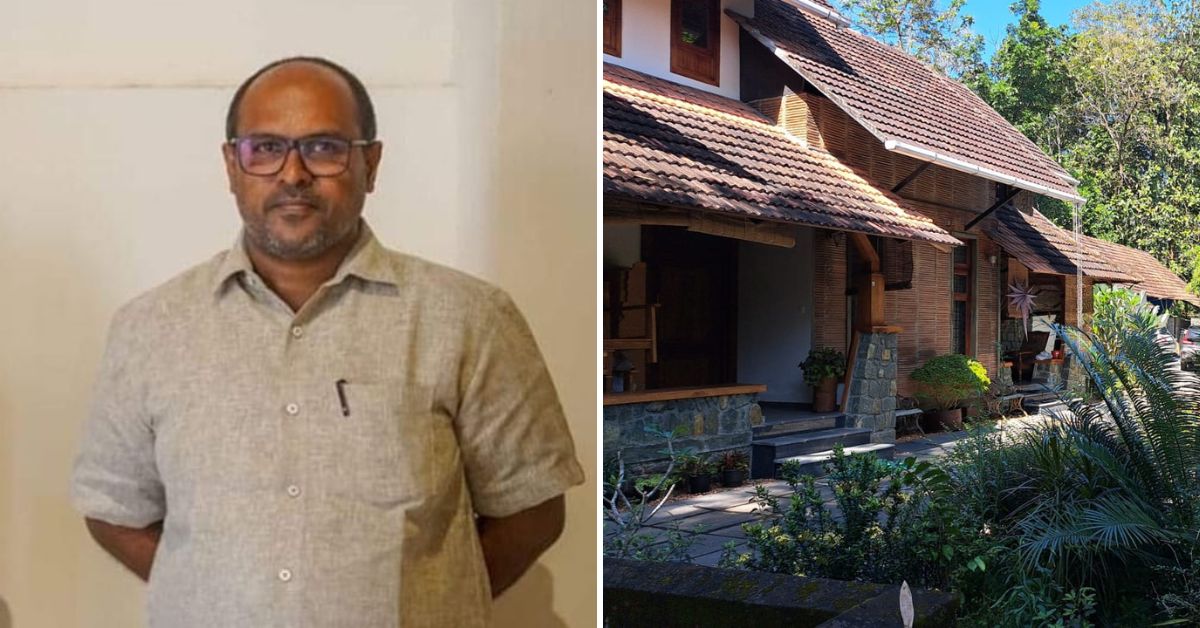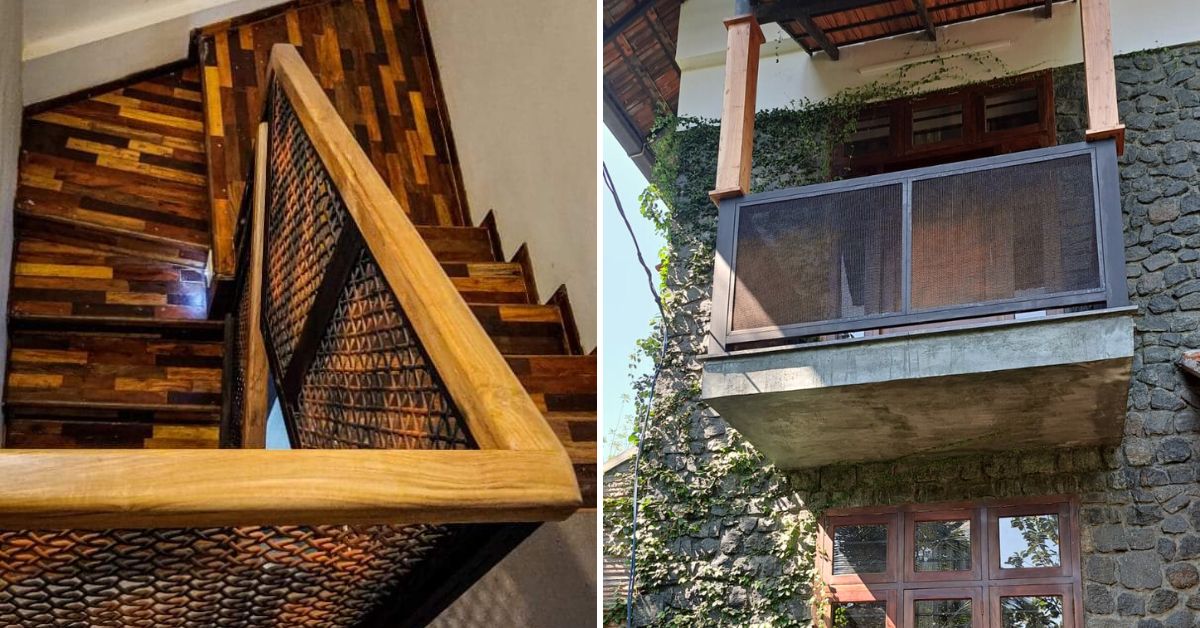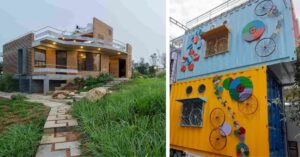Kerala Architect Saved Cost on His House by Reusing Wood, Tiles from Demolished Schools
Architect Joseph Mathew from Pathanamthitta, Kerala sourced old wood, roof tiles, and stones from demolished schools to build his dream home.

A sculptor turned architect, Joseph Mathew from Pathanamthitta, Kerala has been working in the field of design and construction for the past 14 years. By providing creative designs and executing them according to the needs of the client, he has been part of several projects ranging from budget to premium.
Just like everyone, his dream project was to build his own home incorporating all his ideas and vision, without any compromise.
“Every person has their own tastes and interests they wish to see reflected in their home. So, when we build a house for someone, there is a limit to which we can include our own ideas,” says Joseph, who is highly inspired by Laurie Baker’s style of architecture and designs. “So, while building my own home, I was clear that I wanted it to be as cost-efficient and sustainable as possible.”
Thus in 2020, he finished building his dream house, Vettethethu House — sprawling across 4,500 sqft, set in 40 cents of land at Edamon in Pathanamthitta, unique in many ways.

Though it started in 2015, Joseph says that it took him around five years to complete the construction of his dream home. “I took my own sweet time and finished it step by step. In fact, it was the pandemic-induced lockdown that accelerated the whole process of construction,” says the 51-year-old.
Reusing and repurposing old wood and stones
In order to make it cost-efficient, Joseph sourced materials like wood, roof tiles, and even stones from two old demolished schools.
He says, “Almost 8,000 roof tiles have been sourced from both schools, along with the wood, and around 45 loads of stones from there have been used to build walls in the house,” he adds.

The spacious two-storey house itself looks like a piece of artwork, where the woodwork stands out with interesting design elements. Being a sculptor himself, Joseph has also showcased his own pieces of artwork while decorating the interiors.
“Almost 95 per cent of the wood used here is either old or repurposed from the demolished school. All the doors, windows, and even pieces of furniture have been made out of old or repurposed wood,” he says.
Talking about repurposing old wood, Joseph says, “People often have misconceptions about using old materials for construction. For example, they say, ‘using old wood is a cost-effective method’. But, even if using old wood saves costs, it doesn’t compromise on quality or durability in any way. In fact, I feel there is no better material than a piece of wood that stood the test of time.”
Though the flooring of the ground floor has been done using tandoor stones and tiles, the first floor and the staircase linking to it have been done using waste wooden pieces.
Also, the wood finish staircase has a very quirky handrail made of steel crusher meshes used in construction sites. “The material cost here was zero, as they are easily available and for free. There are many such materials that can be reused likewise,” he says, adding that the balcony handrail has also been done similarly.

Another highlight of the house is the use of roof tiles for walls. A few patches of walls, including the compound walls, have been built by stacking roof tiles and glueing them together using cement.
Besides, the stones sourced have been used in the front portion as well as the backyard space of the house. “I could say almost 40 per cent of the house has been built using the stones sourced from the schools. The rest are built using cement blocks,” he says.
The house comprises two bedrooms, a living room, a dining space, a kitchen, and a store room on the ground floor. Whereas the first floor has a bedroom with an attached bathroom and balcony, along with a spacious prayer room.
There is also a partially open courtyard space at the backside of the house, where one can sit and relax. According to him, the side courtyard also works similarly to an inner courtyard by promoting airflow and thereby, reducing the heat inside the house.
“Usually people prefer an inner courtyard in their houses. But I feel that it affects the size of the house as it would take at least 200 to 300 sqft of the area from the total space,” he explains.

The big windows installed throughout the house, the courtyard, and also the truss work ceiling helps the interior to remain cool always. “We haven’t installed ACs as we don’t feel the heat even in summers,” says Joseph, who has also set up a rainwater harvesting system with a capacity of 35,000 litres.
Joseph says that the total cost of building the 4,500 sqft house, including the interiors, was around Rs 80 lakh. If you found our stories insightful, informative, or even just enjoyable, we invite you to consider making a voluntary payment to support the work we do at The Better India. Your contribution helps us continue producing quality content that educates, inspires, and drives positive change. Choose one of the payment options below for your contribution- By paying for the stories you value, you directly contribute to sustaining our efforts focused on making a difference in the world. Together, let’s ensure that impactful stories continue to be told and shared, enriching lives and communities alike. Thank you for your support. Here are some frequently asked questions you might find helpful to know why you are contributing?

He concludes by saying, “I think constructing a conventional concrete house of this size would cost a minimum of around Rs 1.2 crore. Also, I feel that I was able to build it cost-efficiently because, as an architect, I am privileged to have access to these resources easily.”
Edited by Pranita Bhat; Photo credits: Joseph Mathew
This story made me
-
97
-
121
-
89
-
167














